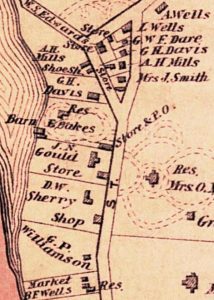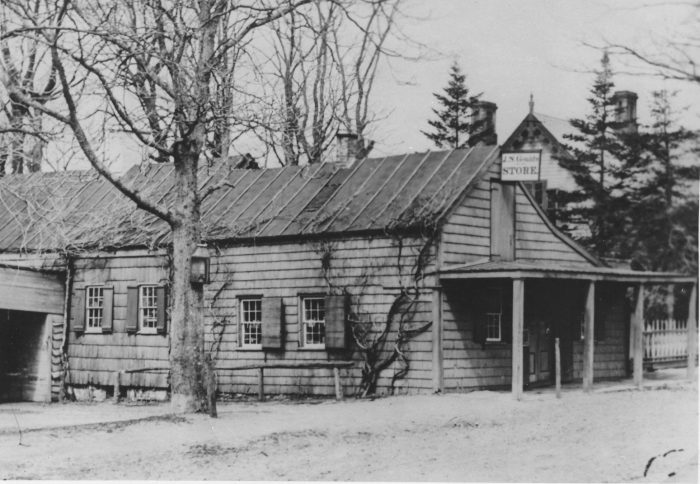History Close at Hand: When Stony Brook gained its own post office
By Beverly C. Tyler
The post office in Stony Brook has a long history of service to the community. Until the 20th century, the postmaster was the only person authorized to handle letters and write money orders. Each rural post office had one representative of the postal system, the postmaster, who was appointed by the president of the United States with the advice and consent of the Senate.
A postal system existed in Massachusetts as early as 1639. In 1672, New York Gov. Lovelace established service between New York and Boston along the future Boston Post Road. Benjamin Franklin was appointed Postmaster General for the British Colonies in America in 1753 and served until 1774, when he was dismissed by the Crown. He was reappointed by the Continental Congress in 1775 and served for 15 months, establishing a sound postal system. The U.S. postal system was created when Samuel Osgood was appointed the first Postmaster General on Sept. 26, 1789.

The first Stony Brook postmaster was Nathaniel Hallock. According to National Archives records, he was appointed on March 21, 1826, and served until June 24, 1836. Little is known about Hallock or his post office, but it was likely part of a general store, as was typical of post offices on Long Island in the 19th century.
The cost of posting a letter weighing less than 1 ounce was six cents until 1847, when stamps were first issued. Letters were single sheets of paper folded, addressed, and delivered for six cents within 30 miles. Beyond 30 miles or for heavier letters, the cost increased slightly, with a maximum charge of 25 cents for a letter traveling more than 400 miles. For example, a letter sent to “Mr. William S. Mount – Stony Brook – Long Island – N.Y.” in 1841 from Monticello, Georgia, was marked, folded, sealed, and addressed in the customary manner of the time.
The second Stony Brook postmaster was James N. Gould, who was appointed in 1836 and served until 1861. He was reappointed on March 29, 1867, and served until 1870. Gould owned and operated a general store, which was located just north of where the Reboli Center now stands. The store was demolished before 1900, as was Gould’s home, which stood just north of the store. Both were removed to make way for the village improvements in the 1940s by Ward Melville.
According to local lore, it was said to be impossible to ask for any item James Gould didn’t have in his store. On a bet, a customer once asked for a pulpit, and Gould amazed everyone by producing one from the store’s attic.
The third postmaster, Edward Oakes, began his service in 1861 as the Civil War began at Fort Sumter. He served until 1867, when James Gould resumed the position. During this period, the post office introduced the money order system in 1864 to allow soldiers to send money home. Only the postmaster could process money orders, as he was the sole postal employee.
Oakes’ general store was located north of Gould’s store and home, on the west side of the business triangle along what was then Main Street. Residents recalled a long horse block in front of the store where men gathered for evening chats. Oakes served as postmaster again from 1870 to 1885. During this time, the store was known as “Oakes and Topping,” later “Topping and Smith,” and eventually, around 1901, “E.E. Topping.”
William O. Gould succeeded Oakes as postmaster in 1885, taking over his father’s general store. He served until 1889, during which time the post office expanded its services. In 1885, the special delivery service was introduced, allowing for prompt mail delivery, which marked a shift from the rural post office’s general store model to independent operations.
From 1889 through the end of the century, Stony Brook had five postmasters. John W. Copley was appointed in 1889, followed by David R. Rayner in 1892. Charles J. Williamson succeeded Rayner on Aug. 4 of that year. William O. Gould returned as postmaster in 1893. On May 1, 1895, Nellie E. Smith became Stony Brook’s first female postmaster. In 1898, Daniel W. Arnold became postmaster, serving for less than two years.
The turn of the century brought stability to the post office as it continued to grow and adapt to the needs of the community.
Beverly C. Tyler is the Three Village Historical Society historian and the author of books available from the Three Village Historical Society, 93 North Country Road, Setauket. Tel: 631-751-3730.







